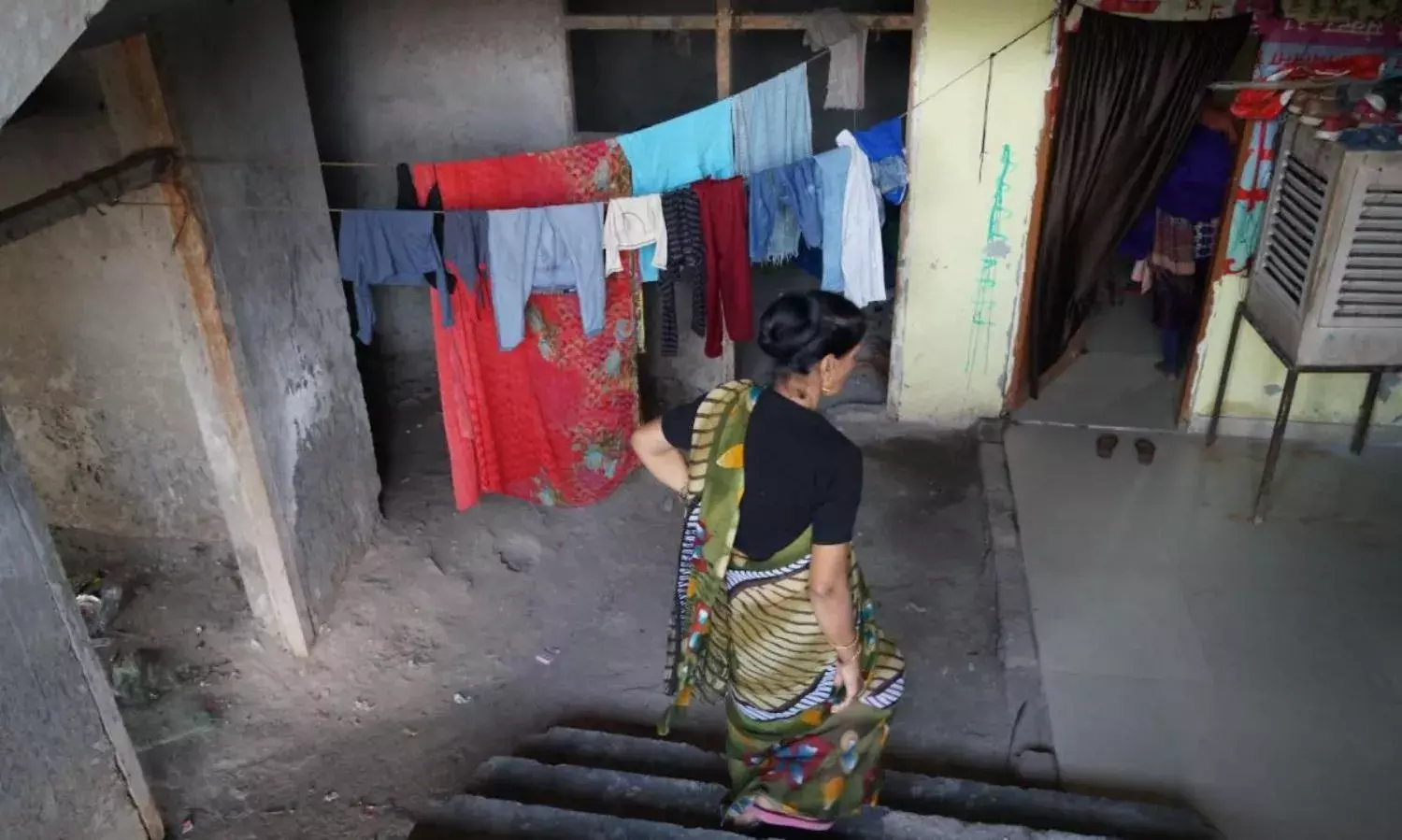The Single Mother Migrants of Nithari Village
Surviving Smirch

Lipi has been living alone in Nithari village for the last five years that houses thousands of migrants from Bengal, Bihar, and Uttar Pradesh. She hails from Malda region of West Bengal. She is separated from her husband and has an eight-year-old son who stays with her parents in the village.
“I am here to earn so that I can save money for my child’s future as we were abandoned by my husband when I was only one month pregnant," says Lipi.
She continues to wear Sindoor and Shakha as the Nithari area is not safe for single women like her and it’s difficult to find work as a spouseless woman. She works as a domestic worker in Noida and earns Rs. 8000 per month, more than what she used to earn as a ‘Tant saree’ handloom worker in Bengal.
Nithari is a village situated in Sector 31 of the Noida city of Uttar Pradesh where migrants have settled over 30 years and lives along with the local Gujjar population. The mobility of these women is influenced by a variety of factors such as disasters, extreme poverty and violence.
The literacy level of the area is low and even though services such as water, bathrooms, and power are provided, the state of the roads and sewage is appalling. Workers like Lipi live in a small room and use the common toilet down the street.
Another domestic worker, Sheela from Darbhanga, Bihar, came to Nithari to be with her orphaned granddaughter and started working as a cook in houses of Sector 26 and 25. She lost her sons and daughter-in-law to chronic diseases and says, “I lost my children when they were very young but I am earning to educate my orphaned granddaughter so that she can become a teacher and be financially independent.”
According to the International Labour Organization, women account for 80% of the world's 67 million domestic workers (aged 15 and up). Domestic labor is a circumstance connected with rural-urban female migrants and are one of the most deprived categories of people. NCRB data shows the number of recorded incidents of domestic worker assault increased from 3411 in 2010 to 3550 in 2012. Given the relative social and economic status at stake, it's not hard to believe that many of these incidents go unnoticed. Domestic employees' legal options are extremely restricted.
Others with Sheela complain about lack of decent employment opportunities. Some like Seema deliver well-ironed clothes to the residents of Sector 26, Noida. She stays in one room without a kitchen and bathroom along with her two sons who also work with her. Her husband is a drunkard and lives in their village back in Uttar Pradesh’s Hardoi.
Residents of Nithari hamlet stand in lengthy lines early in the morning to fill their water containers due to a severe water shortage in the region. As one progresses further into Nithari's lanes, the situation worsens. Bala’s life precariously remains the same even after migrating to an urban village.They reside in temporary “jhuggi” that house rats too. “I am the sole bread earner of my family and at times when there is no money, I give my children chapati with water”, says Bala.
There are many welfare schemes and laws introduced by the government for the benefit of migrant women like Janani Suraksha Yojana. During COVID-19 pandemic, the Centre announced a payment of Rs 1,500 for women with Jan Dhan accounts, which did not reach many beneficiaries because of lack of awareness and inactive accounts. When asked, Sheela, Lipi and Bala were not aware of any such schemes.
With the increased feminization and expansion of the workforce, both in the formal and informal sector, there is a pressing need to consider internal migration as a policy issue, particularly in the context of single mothers' social concerns. Women are migrating to work within deeply patriarchal systems and because of the societal stigma, single migrant mothers like Lipi must conceal the truth about them being abandoned.



